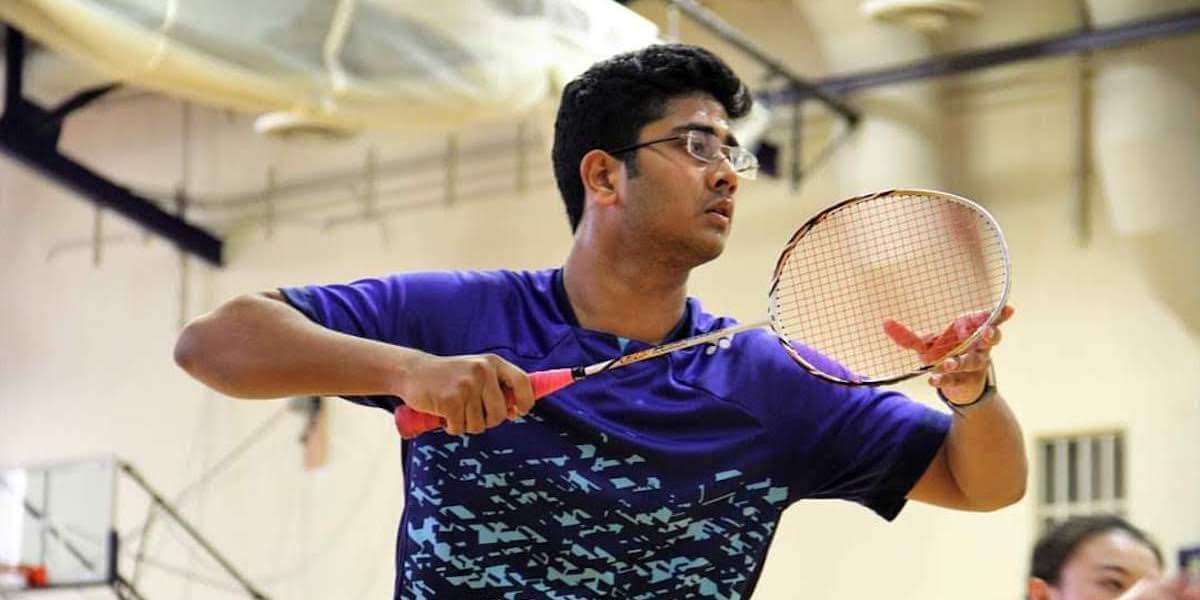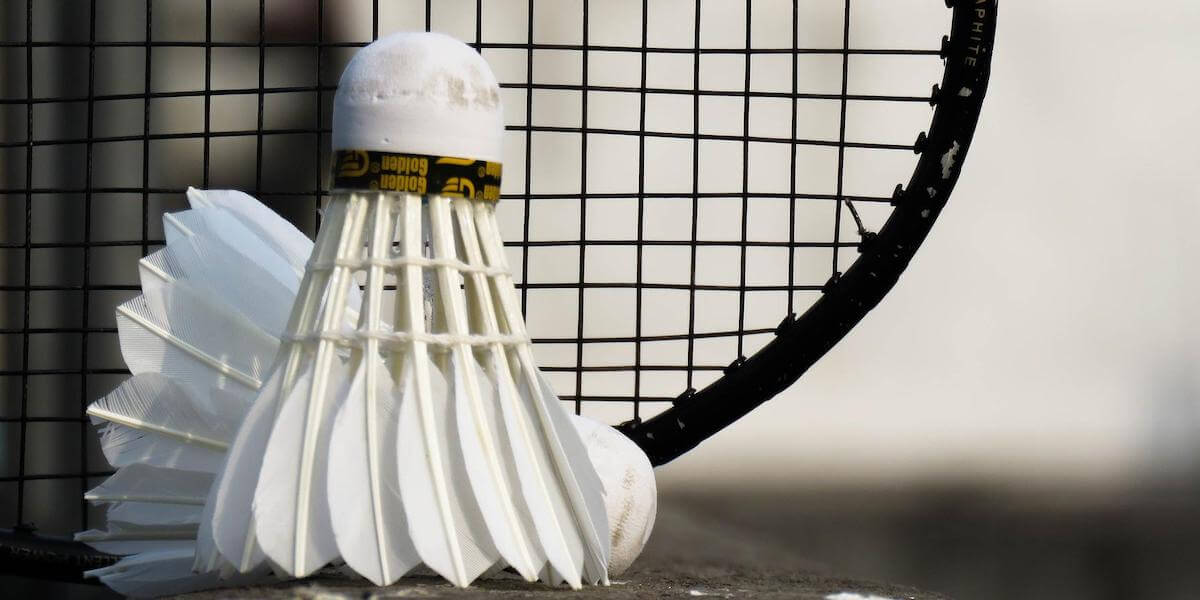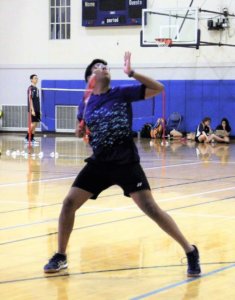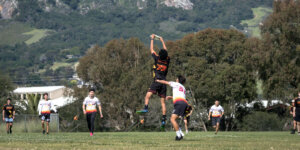
Saket Venkatesh won USC Viterbi’s 2022 Outstanding Achievement in Leadership Award . He has been researching how to improve the shelf life of shuttlecocks and reduce animal cruelty in the production process. Image/Saket Venkatesh
With its lightening pace and intricate strategy, badminton is one of the world’s most popular sports in terms of participation — second only to soccer — with over 220 million regular players.
Saket Venkatesh (M.S. ISE ’22) grew up on the badminton courts of India, the birthplace of the modern game, where it remains wildly popular. As a kid, he tagged along to watch his dad play and fell in love with the game. Then, after years of hard work, he made his way into the prestigious Prakash Padukone Badminton Academy, a breeding ground for future Olympic champions that was founded by former world number one player, Prakash Padukone.
But as a talented young player with big dreams, Venkatesh was soon to discover there was a dark side to the feathered shuttlecocks he and his fellow athletes pelted across the courts at dizzying speeds and impossibly precise arcs.
A competition-grade badminton shuttlecock is crafted from 16 overlapping goose or duck feathers embedded into a cork base. The feathers require a specific curvature that can only be found in the left-wing feathers of a bird. This configuration allows the shuttle to have the very exact weight and aerodynamics needed for elite games.
In recent years, the way these feathers are gathered has drawn the ire of animal lovers. It’s something that just didn’t sit right with Venkatesh.
“When you enter the sport, you’re just given the feather shuttlecock and you never think about what the implications are. But when I was doing a bit more research, I understood that shuttlecocks come about through a lot of animal harm,” Venkatesh said.
“Geese or ducks are held down by their necks and the feathers are plucked out of their wing. And because it’s only plucked out of one wing, the bird is imbalanced. There is a lot of pain that goes on,” he said.
The concern is also an environmental one. Not only is the manufacturing process unnecessarily cruel, but it also generates a lot of waste from discarded shuttles, which have a notoriously short shelf life. Any minor wear and tear to the shuttlecock completely ruins its integrity.
“So in any professional tournaments — whether that’s the Olympics, the All England Open or the India Open — every two to three points, the shuttle is exchanged for a new one and the old one is thrown out,“ Venkatesh said.
“It’s just waste at that point. It can be used for drills, but never for a match. Looking at the life cycle, after the bird endures so much pain, it’s all in vain because the shuttle is only used for a minute or two and then thrown out,” he said.
And while there are shuttle alternatives, such as the plastic versions often used by children and casual players, their specifications do not offer the precision of the competition-grade feathered shuttles and so they cannot be used at an elite level.
Venkatesh is now hoping to change that.

Badminton shuttlecocks are made from feathers plucked from live ducks and geese. They have a very short shelf life, and must be discarded after only minutes of play. Image/Pixabay
Since coming to USC Viterbi in 2018 to undertake his B.S. and M.S. in industrial and systems engineering and engineering management, while also playing with USC Badminton, Venkatesh has been working under the guidance of Smith International Professor of Aerospace and Mechanical Engineering Satyandra K. Gupta to develop a proposal for a graphene-based shuttlecock to improve shuttle lifespan and reduce animal harm.
The research aims to create a commercially viable two-step plan that would firstly see existing shuttles coated in the graphene material, to reduce damage during competitive play and keep feathers intact — vastly improving the product lifespan.
“So instead of using 30 a match, we can potentially just use one a match,” Venkatesh said.
Venkatesh said professional players would not be able to notice a significant difference in the shuttle, as graphene is an extremely light and durable material with good absorption properties that would not change the weight and aerodynamics of the shuttlecock.

Venkatesh previously trained at the elite Prakash Padukone Badminton Academy in India, and has been playing on the USC badminton team. Image/Saket Venkatesh
“This would be a short-term solution, but the second step is more of a long-term solution where we could completely replace the feather shuttlecocks, using other materials to create a complete substitute,” Venkatesh said.
The project is currently in the early stage of conception to establish viability, whereas the next stage would involve lab testing of the materials. Venkatesh said there is a lot of tradition in the centuries of badminton making it difficult to completely change a fundamental component such as the feathered shuttlecock — which is why he has been looking into a more gradual two-step process to firstly improve the existing shuttles before phasing them out.
“There is no product in this space right now. The Badminton World Federation is definitely open to experimenting with new products, but at this point they just don’t have anything to experiment with,” he said.
While Venkatesh has been harnessing his engineering knowledge to improve his beloved sport, he can also see how many of the attributes he gained while growing up and playing high-level badminton have come in handy during his engineering education.
“It is a sport where a lot of strategy comes into play and it requires logical decision-making, and naturally I feel that at the core of engineering as well, so it was definitely a good overlap for me,” Venkatesh said. “Engineering really hones the left side of your brain and pushes you to think strategically and in a logical manner, and I was applying those concepts while I was playing badminton as well.”
Venkatesh was recently awarded USC Viterbi’s 2022 Outstanding Achievement in Leadership Award and the Master’s Student of the Year Award from the Daniel J. Epstein Department of Industrial and Systems Engineering. After graduation, Venkatesh will be moving to New York City to take up a role with PwC’s strategy consulting team Strategy& as a customer transformation associate. He’s still hoping to find a badminton team in the Big Apple so he can continue to improve his game.
“I love the sport. I don’t want to change the way we play. But maybe making it a bit more ethical would be the way to go forward,” Venkatesh said.
Published on May 12th, 2022
Last updated on June 6th, 2022










